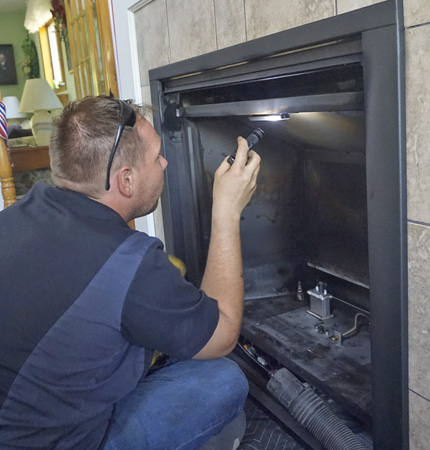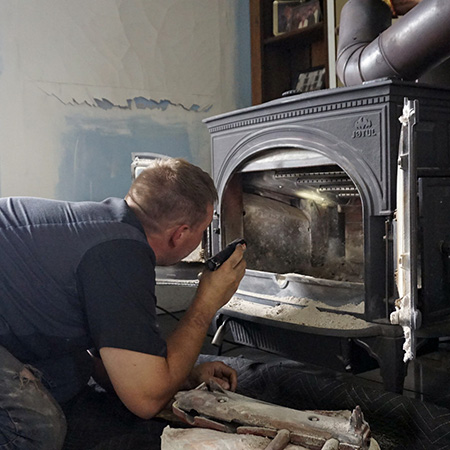What to Do About Sooty Deposits
It is no secret that the interior of a chimney can be a dirty, dusty and smelly mess after the winter heating season. And whether you have a wood-burning or gas fireplace or heating stove, soot will deposit in the chimney and/or stove pipe. While the chimney is designed to expel toxic fumes and contaminates like creosote and soot, some of it will circulate and settle inside the flue and firebox. But there are a few things you can do to help reduce the amount of soot in your fireplace or heating stove.
Start the fire season with a clean chimney.
Soot and other contaminants left over from the previous winter will only continue to build up inside the chimney. Whenever you start a fire, a chemical reaction during combustion creates a variety of contaminants including carbon, creosote and carbon dioxide, among others. It’s the carbon that we refer to as soot. And these microscopic particles can quickly spread through your home’s ventilation staining walls, flooring, and clothes.
The best way to minimize soot is to remove it before using the fireplace or stove in the winter. This includes cleaning your ceramic logs if you have a gas fireplace. Yes, gas fireplaces create soot too. You can do it yourself, but it’s better to call your local chimney service to inspect and sweep the fireplace and chimney before use. A trained and certified technician will give your chimney a check-up. They will also remove the soot and other contaminants giving you peace of mind that your fireplace is safe for use.
Install glass fireplace doors and keep them closed during the fire.
A beautiful roaring fire in the fireplace is lovely to look at, but its best to view it from behind glass doors. Mesh screens alone are not enough to keep soot and debris inside the fireplace where it belongs. It can also be a safety hazard for small children and pets. Installing glass fireplace doors will give your home an additional layer of protection from the soot and other contaminants. It will also more evenly distribute the heat throughout the living space, increasing the efficiency of your wood or gas burning fireplace. When the fireplace and doors are cool, you can use a glass cleaner to remove any stains that accumulate. Remember its easier to remove the stains from the glass door than from the floor or nearby furniture and Watch for downdrafts.

Some chimneys are more prone to downdrafts than others. It could be its construction, its design, or even the flue liner. Typically, a chimney works like a vacuum sucking in the outside air to push toxic fumes and other contaminants out of the stack. And it’s this hot air that is being expelled that causes a draft. And the more heated the air inside the chimney, the stronger the draft and more soot. A draft can occur outside the chimney too. On a windy day, a big gust of wind can blow straight through the top of the stack, forcing air down into the chimney.
This sudden downdraft can blow soot all around the flue and firebox. And if your fireplace is only protected by a mesh screen the soot, ash and other debris can spread around your house too. Close the damper when the fireplace is not in use it will increase energy efficiency and protect your living space from downdrafts.
Clean the pilot light on gas heating appliances.
If you have a gas fireplace or heating stove, you’re not immune to soot. Any form of combustion, whether its solid- or liquid- fuel creates residue. The pilot light is the source of ignition. When cleaning the fireplace or heating stove, any soot should be cleaned from this area as well. For your safety, contact your local gas or hearth professional to clean any gas heating appliance.


 (563) 582-5156
(563) 582-5156



